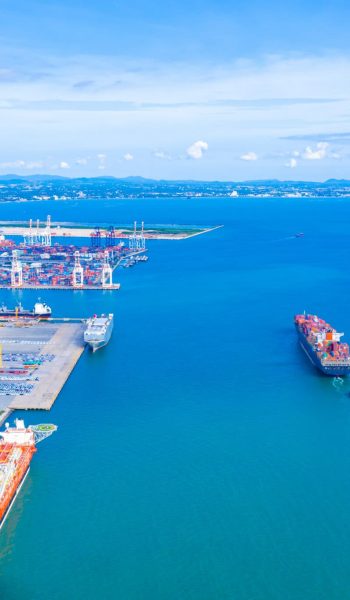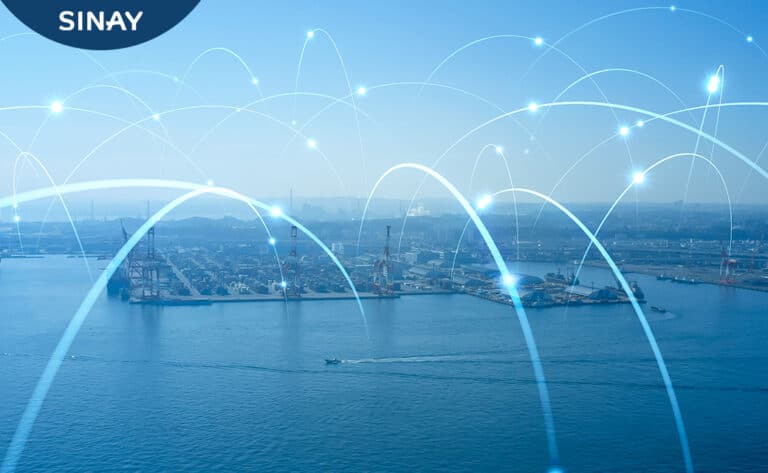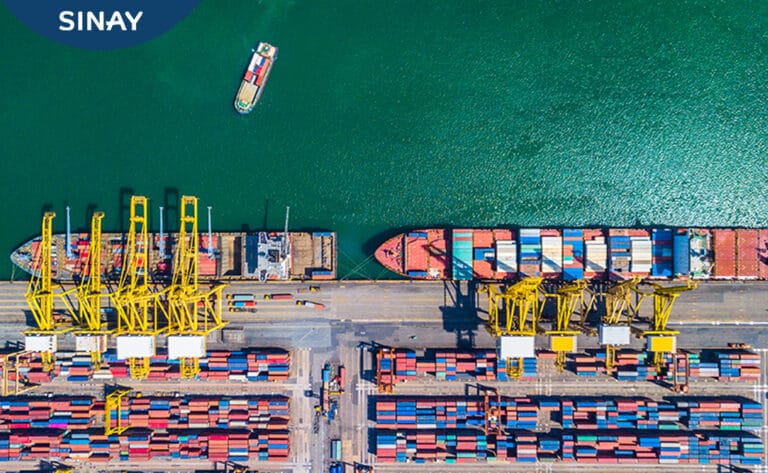Global trade has been the backbone of human civilizations since time immemorial. And ships, coupled with the shipping industry, has been the key factor in keeping global trade alive. As a result, the maritime industry now accounts for a mammoth 90 per-cent of the global trade share. To put things in perspective figuratively, the total value of the annual world shipping trade had reached more than 14 trillion US Dollars on an annual basis.
So, what happens when an industry handles such a large amount of cargo? There’s a ton of data that gets generated. And in the 21st century, data is everything. Data helps business leaders to make decisions based on facts, statistical numbers, and trends. It helps companies to pinpoint all the shortcomings that they’re plagued with, something that might not be visible when you look at data.
Now that we know that the shipping and logistics industry generates a ton of data, we’re well ready to understand what big data is, and fully grasp its importance for the industry that is driving global trade.
Big Data: A Game Changing Technology for the Shipping Industry
Imagine a tool that completely transforms the way you look at your business. A tool that has taken sectors like finance, healthcare, and banking by storm globally. A tool that is getting aggressively adopted by shipping companies worldwide, triggering the next big revolution that the industry has been waiting for eagerly. That’s big data for you.
Before understanding the term and the complexities associated with it, we need to understand how data used to be processed before the inception of modern data science.
There are two types of data that we normally see-a traditional data and, non-traditional data, depending on the area from where the data is sourced. What big data basically does is, it condenses data arriving from both of the sources, creating a centralized system where everything simultaneously gets stored, analyzed, and acquired later.
Predict the ETA of any vessel for free!
Get an accurate prediction of the ETA of any vessel thanks to our ETA Calculator Module. It’s easy, in real-time and free. You just have to sign-up to our HUB.

Associating all the available information with the centralized database, big data find out hidden patterns to make real-time predictions. It also finds out hidden patterns among the data points that might’ve been missed when you look at data traditionally.
So, the real question that arises now is: How exactly can the shipping and logistics industry benefit from big data? Let’s explore that.

Applications in the Maritime Industry:
1. Vessel Route Planning and ETA Prediction:
Managing ship sensors and accurately predicting the Estimated Time of Arrival(ETA) of vessels is one of the most important applications of big data. A better ETA prediction translates into reduced delays and a net improvement in the overall operational efficiency of the entire supply chain. Notwithstanding, proper cargo tracking is an absolute necessity when it comes to ensuring the necessary transparency and confidentiality in the logistics industry.
The ideal route, the route provided by weather service agencies, besides the actual route taken by the vessel can be tracked by shipowners and other related authorities in real-time. Shipowners can easily monitor any variation in vessel speed, ETA, and other factors using big data, thus ensuring that the voyage goes as per original plans and remains profitable in the long run.
2. Avoiding Costly Mistakes with Automated Analysis:
Imagine a computer keeping track of everything that your company has been doing throughout the last few years. Every business has some sort of shortcoming or the other, and there’s always room for increasing efficiency. The system is constantly getting updated on information regarding the reasons behind vessel losses at sea, losses of containers in ports or storms on the high seas, port congestion due to excess of vessels, delays due to container shortages, etc. This big data contains every minute detail on factors that affect the efficiency of the shipping and logistics industry. This can be leveraged to frame decisions in the future for predicting and avoiding costly problems, creating a more reliable supply chain in the process.
3. Improved Ship Designing Practices:
The Shipbuilding industry will be one of the prime beneficiaries of the advent of big data. By analyzing data from the sensor of a previously used vessel that- let’s say, underwent some structural damage in the due course of time, or of a vessel that is a marvel of modern naval architecture, shipbuilders will know exactly what changes they should make or what steps they ought to take while designing a new vessel. The data collected earlier could help in testing a proposed ship design without physically developing the ship or even its prototype. That’s a big win-win situation for the shipping industry.
4. Ship Chartering Analytics for Performance:
Finding the appropriate ship for transporting cargo at the most economical price represents one of the hardest tasks for any charterer. The task heavily involves third parties like well-known shipbrokers and shipowners, meaning that a person has to have a lot of reliable contacts to make a profit in the end. The risk profile involved in such a task is huge too, and you may lose a lot of money if everything doesn’t go accordingly. Ship needs to have more and more technologies onboard to be efficient.
Then enters big data in the scene. Backed by real-time analytics that readily provides charters with readily available, authentic, and actionable insights to drastically improve decision-making. Plus, there’s a host of other data you get about the vessel while implementing big data: Automatic Identification System (AIS) information, position reports, estimated times of arrival, vessel particulars (such as size), and market information, all at a single place.

The adjoined table showcases some of the applications of big data for some of the roles in the maritime industry.
Role in the industry | Big data applications |
Ship operator | Drafting energy-efficient solutions to cut on fuel consumption, monitor emissions, reducing operation costs… |
Fleet Planning | Smart allocation of the fleet and other plannings that actively involve proven statistical data. |
Shipbuilder | Ensure maximum optimization for your newbuilds with the help of big data. |
Technical Management |
|
At SINAY, we accelerate the digital revolution of the maritime industry with advanced big data technologies, hosted on a fully secured platform.
SINAY’s platform for big data, named SINAY HUB includes tools like algorithms, artificial intelligence, machine learning and analytics & monitoring management dashboards so that shipowners and ship managers are readily equipped with the necessary information while making big decisions like:
- Predicting the most suitable vessel route considering the weather, safety, and fuel economy.
- Picking up the best time to clean the ship hull from fouling.
- Choosing the best vessel for chartering purposes.
SINAY privileges from 10-year long expertise when it comes to collecting & analyzing maritime data, making the most relevant inputs for our customers. Our long-term goal is to become an international leader in environmental and digital expertise in the maritime economy.
To do this, we want to support maritime actors in their digital transition, promoting innovation and protecting the environment, using machine learning and artificial intelligence while respecting maritime culture for a better world.
Frequently Asked Questions About: MARITIME BIG DATA
Maritime data can include data about shipping and vessels, ports, environmental monitoring, sea life impact, and GIS.
Big data allows maritime commerce companies to have a more transparent view on all operation activities, forecast, predict, and make more accurate decisions.
Big data helps the maritime transportation sector to forecast and predict shipping route, fuel consumption, estimated time of arrival, and environmental impact.
Big Data is more than just large amounts of data. Big Data allows companies to use enormous amounts of data from non-traditional sources. A non-traditional source is time-sensitive data, not just past recorded data, used to optimize the industry and ports. Big Data includes texts, audios, videos, and real-time information.
An example of big data is: sensors can be attached to vessels, then data is collected from these sensors and used for predictive technology like estimated time of arrival.
Big data is stored in a data lake.





